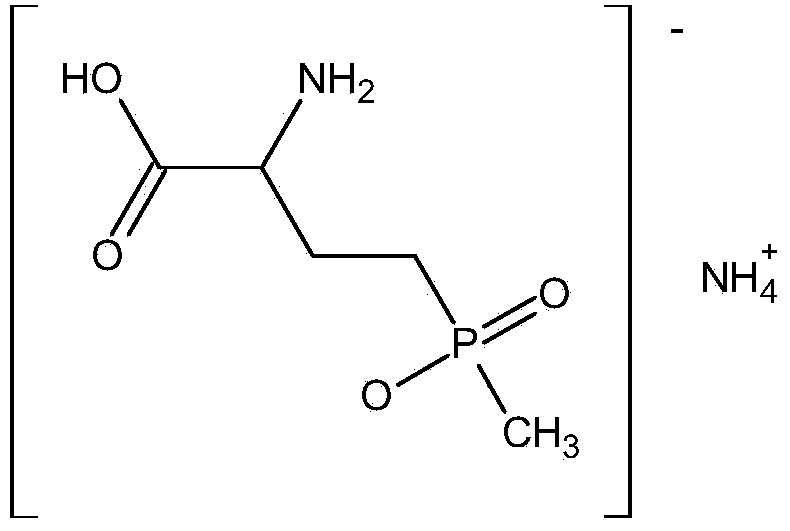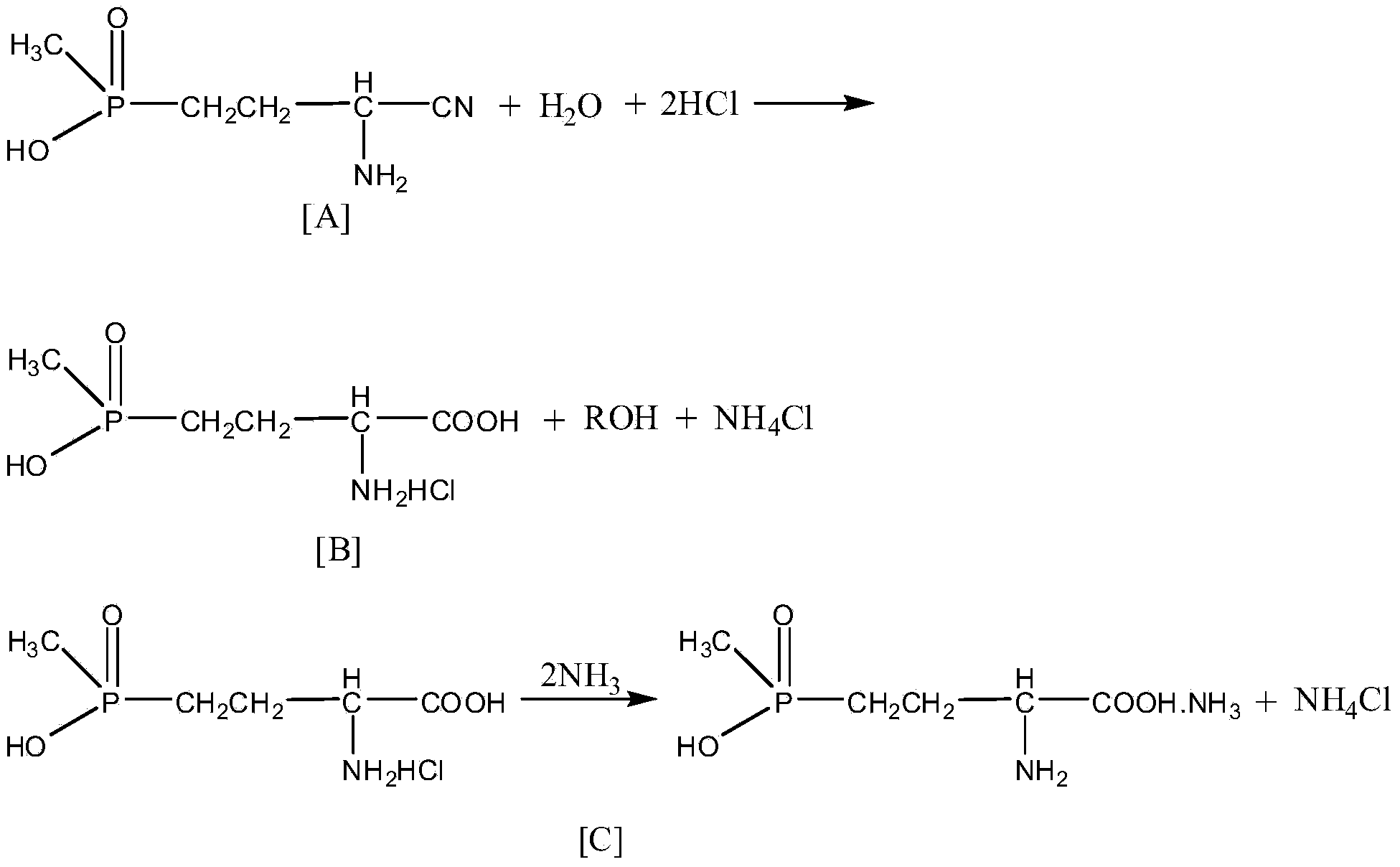Glufosinate purifying technology
A technology of glufosinate-ammonium and glufosinate-ammonium hydrochloride is applied in the fields of compounds of Group 5/15 elements of the periodic table, organic chemistry, chemical instruments and methods, etc., and can solve the problem of long process route and low purification yield of purification process. , low yield and other problems, to achieve the effect of simple process steps, high industrialization prospects, and low inorganic salt content
- Summary
- Abstract
- Description
- Claims
- Application Information
AI Technical Summary
Problems solved by technology
Method used
Image
Examples
Embodiment 1-4
[0023] According to the feed ratio of Table 1, glufosinate-ammonium hydrochloride (I) is added in 200ml methanol, add R 2 NH 2 Carry out the ammoniation reaction until the pH value is 9. After the reaction is complete, cool to below 20°C and filter to remove the insoluble matter in the system (the white solid is NH 4 Cl and a small amount of sodium chloride), the filtrate decompresses and removes the solvent to obtain glufosinate-ammonium ammonium salt (II) and a small amount of organic impurities, and the alcohol solvent that evaporates can be recycled;
[0024] Table 1 Feed ratio and reaction conditions of ammoniation reaction
[0025]
[0026] According to the proportioning and reaction conditions of table 2, the glufosinate-ammonium ammonium salt product (II) that embodiment 1-4 prepares 1 )-(II 4 ) were added to 60ml water respectively, and CO 2 Gas, carry out neutralization reaction until the pH value is 3.0, after the reaction is complete, cool down to below 20°C...
PUM
 Login to View More
Login to View More Abstract
Description
Claims
Application Information
 Login to View More
Login to View More - R&D
- Intellectual Property
- Life Sciences
- Materials
- Tech Scout
- Unparalleled Data Quality
- Higher Quality Content
- 60% Fewer Hallucinations
Browse by: Latest US Patents, China's latest patents, Technical Efficacy Thesaurus, Application Domain, Technology Topic, Popular Technical Reports.
© 2025 PatSnap. All rights reserved.Legal|Privacy policy|Modern Slavery Act Transparency Statement|Sitemap|About US| Contact US: help@patsnap.com



